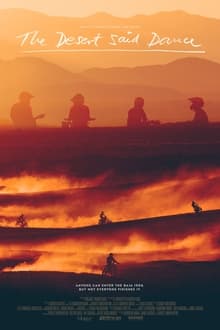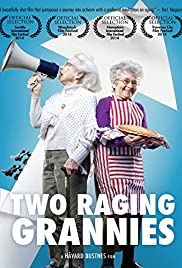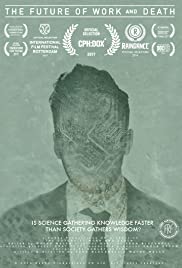
Narrated by Oscar-winning actor Jeremy Irons, The Genius of George Boole assembles academics and industry leaders from across the globe to explore the life and importance of one of the world’s greatest unsung heroes.
You May Also Like

Själö means ‘the island of souls’, and no name could be more fitting for the island in the Baltic Sea, which for centuries was a last stop for women who were considered social outcasts – and who are today forgotten. They were forcibly placed in a closed institution to be studied, measured and weighed – exactly in the way that nature itself was starting to be examined around the same time. Today, the place is a research centre. A young female scientist collects samples on the island, while the whispering voices of the past and never-sent letters echo in the empty hallways.

After the 1999 premiere of the first Matrix movie, it became a pop culture phenomenon. A special documentary about the Matrix saga and its prophetic aspects.

The No. 6 People’s hospital is one of the largest hospital in Shanghai. Through a range of crossed stories, of weakened lives, this is a portrait of China today that stands out.

Anyone can enter the Baja 1000, but not everyone finishes it. Some aren’t tough enough. Some don’t have bikes that are tough enough. And some make mistakes that take them out of the race. Sometimes, tragically, forever. This is a place where dreams go to die. Grand visions and hopes, materialized, but rarely sustained. The desert has this mysterious allure, there is freedom, solitude, and opportunity. The desert is the unforgiving canvas of life, and this is a story about the art of racing with it and against it.

Raging Grannies is a touching and thought-provoking documentary that challenges the idea that we must continue to shop, consume, amass, and keep the economy growing.

The vinyl record renaissance over the past decade has brought new fans to a classic format and transformed our idea of a record collector: younger, both male and female, multicultural. This same revival has made buying music more expensive, benefited established bands over independent artists and muddled the question of whether vinyl actually sounds better than other formats. Vinyl Nation digs into the crates of the record resurgence in search of truths set in deep wax: Has the return of vinyl made music fandom more inclusive or divided? What does vinyl say about our past here in the present? How has the second life of vinyl changed how we hear music and how we listen to each other?

In this provocative documentary, worldwide experts in the fields of futurology, anthropology, neuroscience and philosophy consider the impact of technological advances on the two certainties of human life: work and death. Charting human developments from early man, past the Industrial Revolution, to the digital age and beyond, THE FUTURE OF WORK AND DEATH looks at the astonishing exponential rate at which mankind creates technologies to ease the process of living. As we embark on the next phase of our ‘advancement’ with automation and artificial intelligence driving the transformation from man to machine, the film gives a shockingly realistic look into the future of human life.

California makes some of the finest wines in the world and few places are better than Napa and Sonoma. This entertaining film looks at the wines, wineries and winemakers of Napa and Sonoma, providing fascinating insight into what makes great wines and great winemakers. From the wine novice to the sommelier, there is something for everyone in this tour of the wine culture.

Documentary exploring the deep-seated biases and attitudes about skin color—particularly dark-skinned women, outside of and within the Black American culture.

An honest testimony of addiction, and one woman’s discovery that the only way to save herself, is to save others.

Keith Haring, Robert Mapplethorpe, Norman René, Peter Hujar, Ethyl Eichelberger, Felix Gonzalez-Torres, Cookie Mueller, Klaus Nomi… the list of New York artists who died of AIDS over the last 30 years is countless, and the loss immeasurable. In Last Address, filmmaker Ira Sachs, who first moved to the city himself in 1984, uses images of the exteriors of the houses, apartment buildings, and lofts where these and others were living at the time of their deaths to mark the disappearance of a generation. The elegaic film is both a remembrance of that loss, as well as an evocation of the continued presence of their work in our lives and culture.

An exploration of the appeal of horror films, with interviews of many legendary directors in the genre.